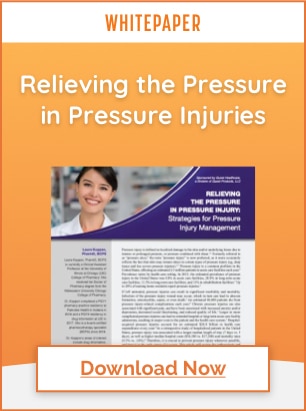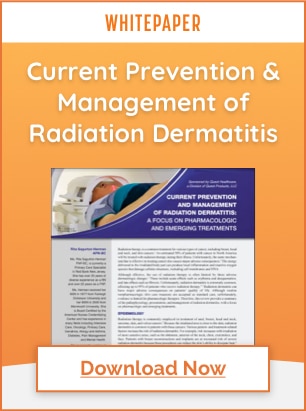
Anal Fissures and Constipation
The majority of anal fissures occur at either the posterior or anterior midline of the anus. They are most common in patients with a history of constipation and they are classified as acute (lasting less than six weeks) or chronic (lasting more than six weeks).
Causes of Anal Fissures
The most common cause of anal fissures is constipation, however there are other risk factors that can lead to anal fissures including:
- Chronic diarrhea
- Low-fiber diet
- Minor injury to the anus
- Crohn’s disease or other Inflammatory bowel disease
- Infection
- Childbirth
Diagnosis of Anal Fissures
Acute anal fissures appear as a tear that resembles a paper cut. Chronic anal fissues appear as a deeper tear and may have accompanying raised edges and/or internal or external fleshy growths due to exposed internal sphincter muscle. Any fissure that lasts more than six weeks is considered chronic.
The location of the fissure can be an indicator of its cause. Fissures on the side of the anal opening are most likely to be caused by an underlying disorder, such as Crohn’s disease, and are typically diagnosed by an anoscopy, flexible sigmoidoscopy, or colonoscopy procedure.
Back-to-front anal fissures are more typically caused by injury to the anus due to constipation or other cause. In fact, 90% of anal fissures are posterior to the midline, whereas anterior fissures occur in approximately 10% of patients, typically in women. Less than 1% of anal fissues occur off the midline position.1
Symptoms of Anal Fissures
The most common symptoms of anal fissures include:
- Pain, sometimes severe, during bowel movements that can last for several hours after a bowel movement
- Bright red blood on the stool or toilet paper
- Cracking of the skin around the anus
- A skin tag or small lump on the skin near the fissure
The Difference Between Anal Fissures and Hemorrhoids
Hemorrhoids and anal fissures can occur at the same time and share many of the same symptoms. The primary difference between the two is the type of injury. Anal fissures are tears in the anal tissue, while hemorrhoids are caused by the weakening of the tissue in the rectum that causes skin to balloon out and fill with blood.
Both hemorrhoids and anal fissures are associated with constipation and straining during bowel movements.
Many people assume painful bowel movements are caused by hemorrhoids.
Hemorrhoids typically cause irritation, sensitivity, and itching around the anus, but rarely lead to painful bowel movements. Conversely, anal fissures are almost always painful, often severely painful.
Treatment of Anal Fissures
Most initial anal fissures can be managed medically and do not require surgical intervention. Nearly 50% of anal fissures heal with therapies such as increased fiber intake, diet and lifestyle changes, and warm sitz baths.1
Practice parameters set by the American Society of Colon and Rectal Surgeons indicate that increased fiber and fluid ingestion, sitz baths, and the use of stool softeners are recommended as the initial therapies for patients with anal fissures.1
If these treatments are ineffective, surgery has been the historical approach to treating anal fissures. The risk of incontinence associated with surgery, however, has brought other pharmacological therapies to the forefront, including topical nitrates, calcium channel blockers, and botulinum toxin.
Prevention of Anal Fissures
The primary way to help prevent most anal fissures is to have a bowel regimen protocol that helps avoid constipation. Stool softeners reduce the risk of tearing due to hard stools and help avoid straining during bowel movements. In addition to stool softeners and other laxatives, other methods that help prevent recurrence or occurrence of anal fissures include:
- Incorporating more fiber into the patient’s diet with foods such as fruits, vegetables, beans, and whole grains.
- Drinking plenty of non-diuretic fluids daily
- A daily fitness routine – for people with limited mobility stretching exercises can help
- Avoiding stool withholding
- A review of all medications which may have constipation as a side effect (pain medications in particular)
Enemeez® and Enemeez® Plus
The Enemeez® formulation is a hyperosmotic, stool-softening laxative that works by drawing water into the bowel from surrounding body tissues. The docusate sodium in this mini enema product prepares the stool to readily mix with watery fluids. It softens and loosens stool and initiates a normal, replicated bowel movement, typically within 2-15 minutes.
Enemeez® Plus is the same formulation as Enemeez®, with the addition of 20mg of benzocaine, assisting in the anesthetization of the rectum and lower bowel. This formulation was developed for patients who experience autonomic dysreflexia, hemorrhoids, anal fissures, or painful bowel movements.
Request samples or an educational In-service for your facility today.
Disclaimer: The material contained is for reference purposes only. Quest Healthcare, A Division of Quest Products, LLC, does not assume responsibility for patient care. Consult a physician prior to use. Copyright 2021 Quest Healthcare, A Division of Quest Products, LLC.
Sources:
- https://www.ncbi.nlm.nih.gov/pmc/articles/PMC3140330/
- https://www.ncbi.nlm.nih.gov/books/NBK526063/
- https://www.mayoclinic.org/diseases-conditions/anal-fissure/symptoms-causes/syc-20351424
- https://www.cedars-sinai.org/health-library/diseases-and-conditions/a/anal-fissure.html
- https://www.crhsystem.com/anal-fissures/difference-between-anal-fissures-hemorrhoids/
- https://www.health.harvard.edu/diseases-and-conditions/hemorrhoids_and_what_to_do_about_them
- https://newsnetwork.mayoclinic.org/discussion/mayo-clinic-q-and-a-painful-bowel-movements-may-be-due-to-anal-fissure/
- https://www.uofmhealth.org/health-library/uf4764




![[Live Webinar] Neurogenic Bowel Dysfunction in Multiple Sclerosis](https://www.questhealthcare.net/wp-content/uploads/2025/02/325-Quest-Healthcare-Speaker-Session-1-500x383.png)


